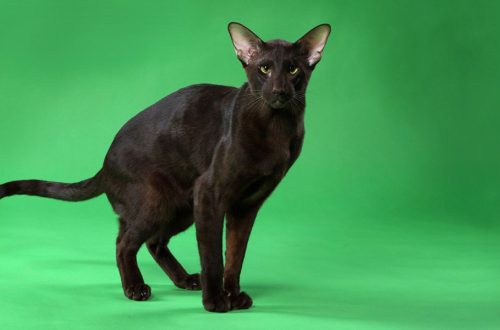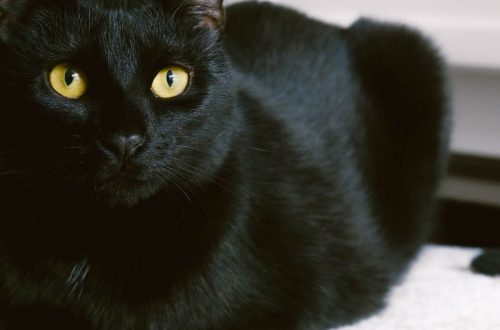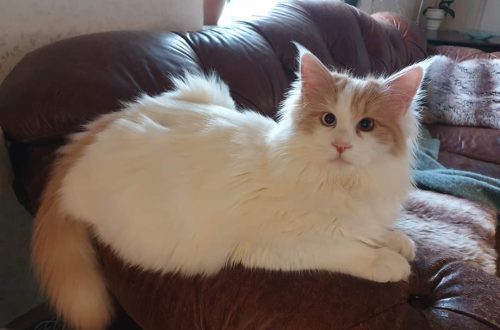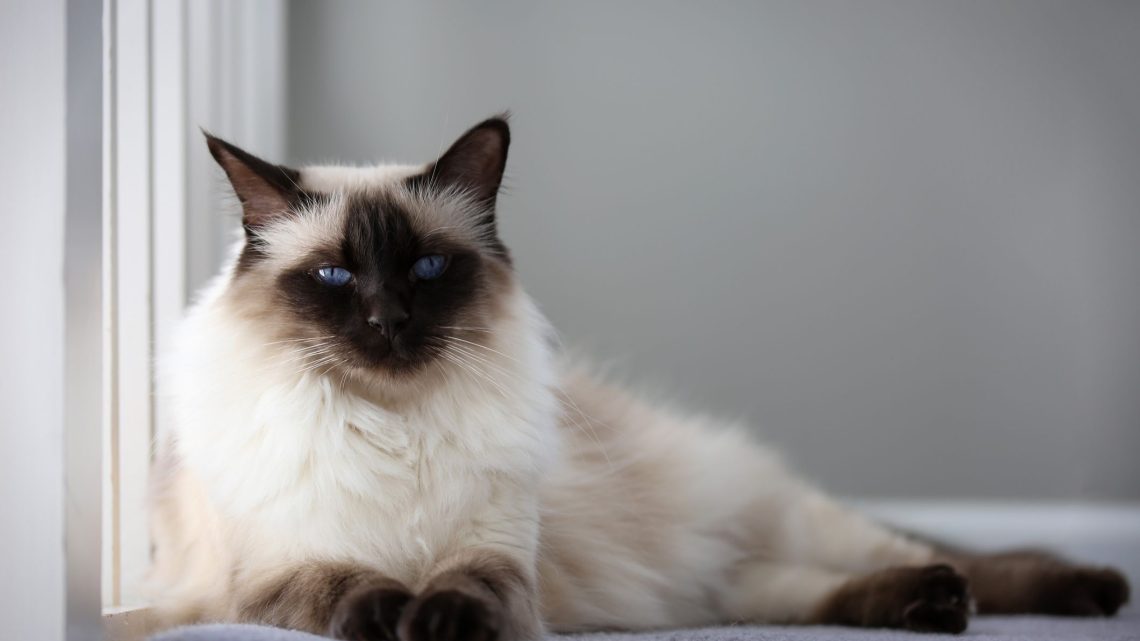
Balinese cat
Other names: Balinese cat , Balinese
The Balinese cat (Balinese, Balinese cat) is the closest relative of the Siamese with a semi-long smooth coat, blue eyes and a point body color. Sociable, playful, has a friendly character.
Contents
Characteristics of Balinese cat
| Country of origin | USA |
| Wool type | Semi-longhair |
| Height | up to 30 cm |
| Weight | 2–5 kg |
| Age | 10–15 years |
Basic moments
- The content of the Balinese requires the constant presence of people in the house: due to the natural sociability, the breed suffers greatly from forced loneliness.
- Balinese cats almost never mark their territory, which cannot be said about representatives of other breeds.
- The superpower of the Balinese is their super-survivability. Kotofei peacefully coexist with any pets and are able to tolerate children’s pranks.
- This is one of the most trainable breeds, so its representatives never have problems with the correct use of the tray.
- The desire for close contact with a person in Balinese cats is innate, so if a less affectionate pet is needed, it will not work to make friends with the breed.
- Unlike double-coated cats, Balinese “fur coats” require minimal care, as they do not fall off and do not gather into tangles.
- The breed is quite talkative, but at the same time, the voices of its representatives are more pleasant and melodic than those of the Siamese relatives.
- In the saliva and urine of Balinese cats, the concentration of Fel d1 and Fel d4 proteins is lower than that of fellow Balinese cats, due to which they are considered hypoallergenic pets.
- Intellectually, the Balinese is one of the top 10 smartest cat breeds in the world.
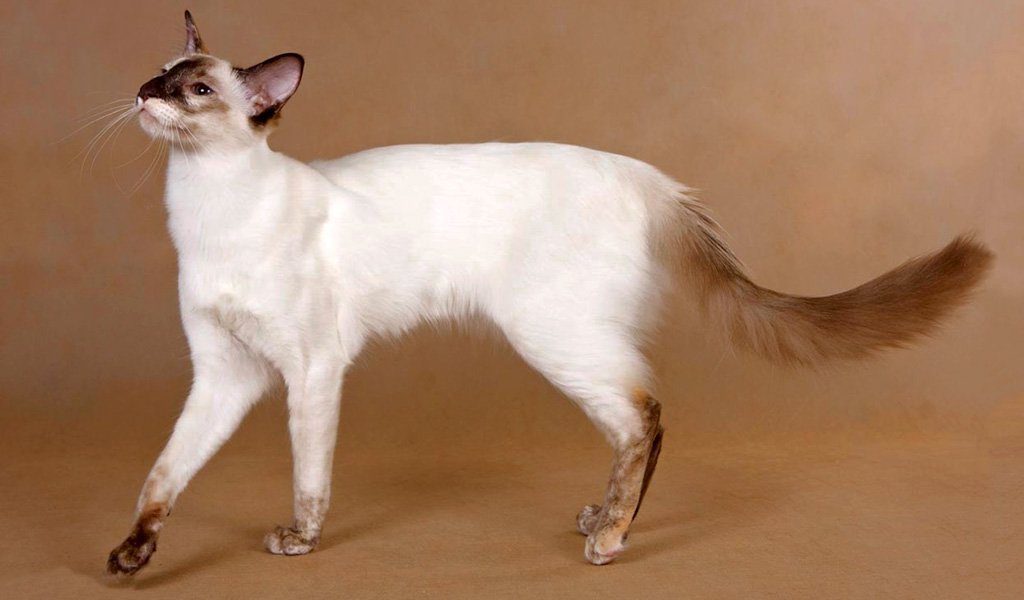
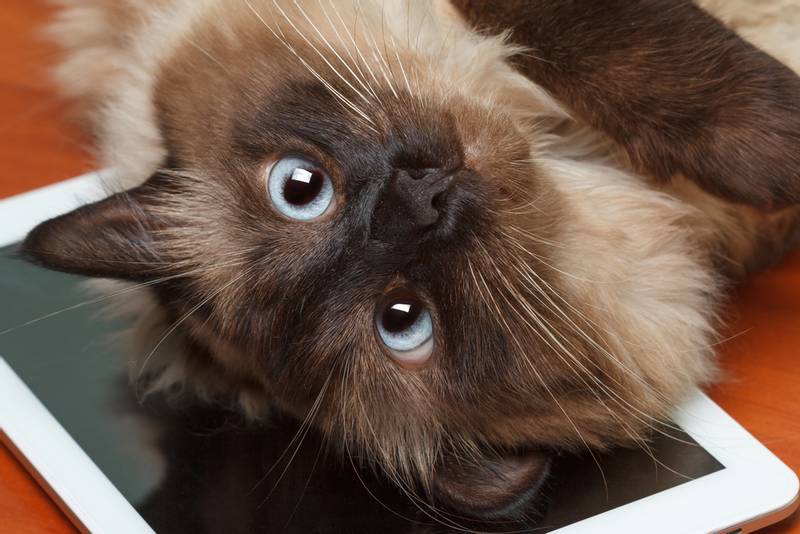
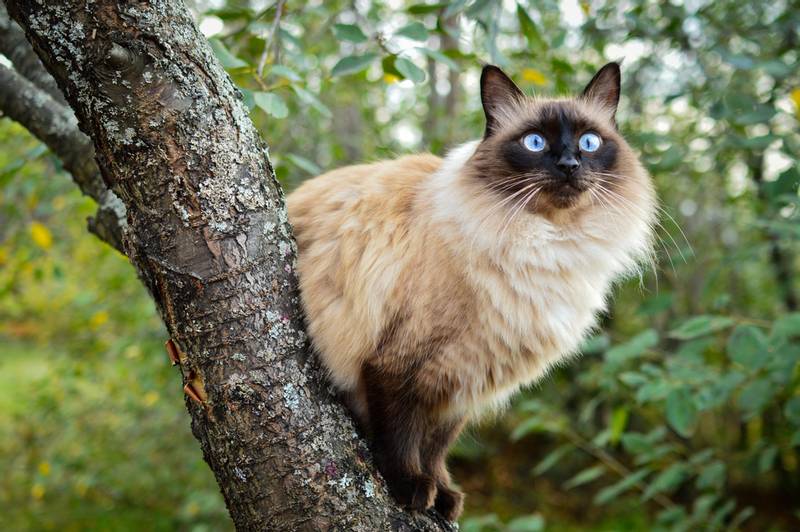
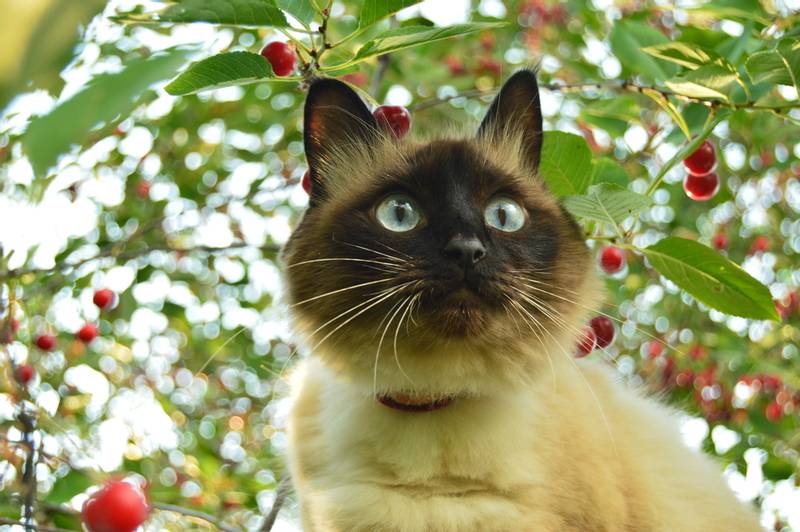
The Balinese cat is an example of good nature and philanthropy, dressed in a silky coat, complemented by a stylish Siamese mask. When you bring this playful chatterbox into your home, get ready for the fact that the concept of personal space will simply cease to exist for you. Now the place at the master’s feet will be permanently occupied by a purring friend, who urgently requires the owner to participate in his funny tricks. The breed also has a lot of intelligence, so from time to time its representative will invent something that is difficult to find an explanation for. In general, you will not be bored with Balinese – this is a fact!
The history of the Balinese cat breed
Surprisingly, the Balinese have existed since the time when their closest relatives , the Siamese, took shape as an independent breed. For decades, Siamese cats have brought long-haired kittens, and even careful selection of producers did not help to completely eliminate this phenomenon. Of course, long-haired babies were immediately rejected, fused to promiscuous cat lovers, until one day the “wrong” Siamese had fans among breeders. As a result, by 1929 clubs in the United States began to cautiously register Balinese cats.
The pioneers who “knocked out” the breed registration in international felinological systems were the breeders Marion Dorsey, Helen Smith and Sylvia Holland. Not to say that the path to standardization was easy – the formation of a single Balinese exterior turned into a real problem, since in the middle of the 20th century Siamese cats were very different. So, for example, for a long time the breed existed in two equivalent types – individuals with a round apple-shaped skull and animals with elongated marten muzzles.
For some time, felinologists have been actively adjusting the appearance of the Balinese to both of these varieties. However, already in 1958 the Siamesereceived a new standard of appearance, which recognized only animals with elongated heads as correct, so that breeders of Balinese cats had to “change shoes on the go.” In particular, a new Balinese type was created, which had a more pronounced resemblance to the Siamese relatives.
In 1970, the Balinese cat breed was recognized by the commissions of the CFA and TICA systems. Moreover, the first association allowed only animal colors of chocolate, seal, blue and lilac point to be bred. Two years later, the Balinese were included in their lists by FIFe specialists. As for interbreeding, for a long time Balinese cats were only allowed to be bred with Siamese . Then an exception was made to the rule, allowing the breed to be crossed with Orientals and Javanese. True, by 2013 the experiment was closed.
Video: Balinese cat
Balinese cat breed standard
Balinese and Siamese are united by a lean type of constitution, but at the same time they share the length of the coat. Ideally, the Balinese cat should have well-developed muscles, at the same time have a sophisticated appearance and not differ in friability of addition. This effect is achieved due to the elongated limbs, neck and body, which make the appearance of the purr exquisitely aristocratic.
Balinese cat Head
The shape of the head of the Balinese cat gravitates towards a tapered wedge starting from the nose and ending at the ears. The skull is flat, even when viewed in profile, without protrusions in the region of the eyes, with a continuous straight line of the nose. The tip of the chin is without slanting, the muzzle is emphasized pointed.
Eyes
The section of the eyes is classic almond-shaped with a pronounced inclination of the inner corners towards the nose. The eyeballs are not deep set, but not protruding either. The iris is painted in a pure blue tone.
Ears
Large ears are a natural extension of the head wedge. The base of the ears is very wide, the tips are pointed.
Body
The refined skeleton is covered with developed muscles responsible for flexibility and grace of movements. The body of the Balinese cat is long and elegant. The shoulders and hips are straight lines, the stomach is tucked up. Mandatory condition: the femoral part should not be wider than the shoulder girdle.
Neck
The neck of the Balinese is elongated, very slender and graceful.
Legs
Proportionate, good length legs end in miniature oval paws. The hind limbs are necessarily higher than the front ones. Number of fingers: on the hind legs – four, on the front – five.
Tail
Balinese tails are long, thin at the base and have a pointed tip.
Balinese cat Wool
The satin “fur coat” of the Balinese cat has practically no undercoat. Due to the fit to the body, the hair seems shorter than it actually is. The longest hair grows on the tail – a flowing awn on this part of the body forms an elegant lush plume.
Color
The traditional colors of the Balinese are pointed. The bodies of animals have a solid tone, sometimes complemented by subtle shades. As the cat grows older, a gradual darkening of the color of the body is possible. Locations of points: muzzle (mask), ears, tail, legs and paws. All point zones are evenly and intensely colored and have the same color. Inadmissible: tipping points, as well as the presence of light hairs on them. The mask covers the entire muzzle, including the vibrissae pads, and passes to the ear area in the form of thin lines. Mandatory requirement: the mask should not go beyond the top of the parietal zone of the head.
Disqualifying vices
Balinese will not be able to attend exhibitions if he has:
- double coat with pronounced undercoat;
- eyes of any color other than blue;
- white fingers or paws;
- obstruction of the nasal passages, due to which the animal breathes through the mouth;
- the number of fingers does not correspond to the number approved by the standard;
- weak hind legs;
- underdeveloped or excessively protruding chin, forming an incorrect bite;
- creases on the tail.
Exhausted and unhealthy animals are not allowed into the ring, so it is important to monitor the condition and general condition of the pet.
Character of the Balinese cat
Balinese is an ultra-sociable cat, aimed at establishing friendly relations with a person. For the insatiable desire to be constantly present in the life of the owner, the purr is often called boomerangs – in whatever part of the apartment you leave your pet, you can be sure that in a couple of seconds he will sit next to you. “Loneliness in bed” after the appearance of a Balinese cat in the house also does not threaten. A purring heating pad will protect the owner’s sleep throughout the night. Moreover, to settle down at your side is not the only acceptable option for a Balinese, because you can still climb on the owner’s stomach, back, and even surreptitiously try to perch on his head.
Almost all Balinese cats are desperate gamers. Running after a rope mouse, fiddling with a candy wrapper, wrestling with a woolen ball – the entertainment program is thought up by the Balinese prankster on the go and carried out immediately. At the same time, hurricane-like destruction does not occur in the apartment: the Balinese are moderately jumpy, but never go to extremes like “flying” on the closet and overturning flower pots.
In intellectual terms, the Balinese cat is one of the smartest breeds, whose representatives are able to develop entire behavioral strategies. Well, more specifically, the Balinese is always aware of when it is better to steal a cutlet from the table and how to silently open the kitchen cabinet, which hides interesting, from a cat’s point of view, contents. At the same time, pets perfectly understand the prohibitions and try to comply with them. If the cat is not allowed to terrorize the hamster, the mustachioed hooligan will not run into a fine, although at the first opportunity he will quietly lick the rodent or rub it with his paw.
In general, the breed is friendly to representatives of the domestic fauna – Balinese cats do not fight with fellow tribesmen and do not share spheres of influence with dogs. Cats also express affection for a person in different ways, since the division of family members into “favorites” and “those who need to be tolerated” is very developed among purrs. It is easy to guess which of the household members the Balinese loves the most. It is this comrade that the pet will faithfully wait for from work, dancing in front of the door while the object of cat worship is behind it.
In moments of relaxation, Balinese cats are not averse to whispering with the owner. Pets love to turn on the “purr”, sitting at the side and on the owner’s knees, gently vibrating to the beat with their whole body. Periodically, the “sound” is set to full volume – usually in cases where the cat is begging or excited about something. By the way, this is one of those rare breeds, whose representatives are attached not to housing, but to its inhabitants. So you can safely go around the world with a Balinese or start a move: the main thing for a cat is to have the one he loves next to him.
Education and training
The high level of intelligence inherent in the breed greatly simplifies the process of training its representatives. Balinese quickly socialize, easily adapting to changing living conditions, and perfectly learn new material. Experienced breeders recommend talking to the kitten as much as possible, explaining any actions – this approach works much better than dry commands. By the way, about commands: the Balinese are so smart that they are able to recognize the meaning of more complex calls than the banal “kit-kit”. For example, almost all pets know their own names and respond to them. Moreover, some cats agree to memorize up to three different nicknames and respond to each, which is considered almost unique.
Balinese cats are malleable and willingly absorb the information presented by the owner. With them it is easy to learn playful tricks and play sports. In particular, the breed performs well in cat agility, which it perceives as a fun game. So if you come across a pet with a defect that does not allow you to be noted at breed shows, such competitions will be an excellent alternative to performing in the ring, because not only purebred and show pets, but also any healthy cat can participate in them.
Balinese are excellent psychologists, masterfully reading the emotions of the owner, so their habits are easier to correct. For example, cats quickly get used to all sorts of restrictions and try to follow them as far as possible. For the same reason, it makes no sense to apply serious punishments to Balinese fluffies. It is better to take a four-legged bully to fright. The cat climbed onto the table – sneak around the corner and spray it with water from the flower sprayer. Balinese got into the habit of sharpening his claws on your favorite chair – treat the fabric with lemon or orange essential oil so that the smell disgusts your pet.
When instilling norms of behavior in a kitten, always remember about the character traits and habits of the breed. For example, if a pet has made his toilet in an unintended place, do not punish him, but check the tray first. Balinese cats are perfectionists when it comes to cleanliness and will not urinate a second time in stale litter. It is pointless to scold for this animal and try to retrain it, so either clean the tray after each such “hike”, or give up the dream of owning a Balinese.
Maintenance and care
Balinese are thermophilic and easily catch colds, so place the bed in the part of the apartment that is least prone to drafts. In the cold season, it is advisable not to let the cat go outside, but in spring and summer it is better not to refuse the animal to walk, especially since the breed perceives the harness adequately. And please, no free range – the protective instincts of decorative Balinese are muted, so that in a force majeure situation, the animal will simply be confused and, most likely, will die.
An interesting fact: Balinese, living in cool rooms and abusing winter promenades, usually change color. As a result, even the lightest areas of their coat darken significantly.
Be sure to think about how to satisfy the pet’s need for games – the Balinese will be happy if a sufficient number of balls, mice and squeakers are given at his disposal, as well as a high-quality play complex with high-quality scratching posts.
Balinese cat Hygiene
The semi-long coat of Balinese cats requires regular, but uncomplicated grooming. Due to the lack of undercoat, the “fur coats” of animals do not fall off and do not form tangled lumps. At the same time, seasonal shedding is inevitable, so with the onset of spring and autumn, the coat will have to be combed daily. The rest of the time, “preventive” combing is enough with a frequency of 1-2 times a week. Balinese cats need to be washed as needed, approximately every three months or six months. The breed is wary of any water “attractions”, so it is very likely that another person will have to be involved in the process. It is better to dry the wool with a towel: the hair dryer dries out the soft Balinese hair, coarsening its structure.
The teeth and mouth are considered the weak point of the breed, so it is extremely important to monitor their hygiene. It is advisable to brush your teeth every 2-3 days. If there is not enough time or the pet stubbornly resists this procedure, try to set aside time for processing the mouth at least once a week. Keep your cat’s eyes and ears clean. Everything is standard here: for the hygiene of the ear funnel, use special drops or powder and cotton pads; to cleanse the eyes – a clean, lint-free cloth, as well as a lotion based on calendula, a weak solution of potassium permanganate, chamomile decoction, saline or chlorhexidine at a concentration of 0.01% to choose from. If the eyes look healthy and you just need to remove dry crusts from them, boiled or distilled water is enough, as well as a clean cloth.
Balinese cats should have their nails trimmed twice a month. Remove only the very edge of the claw so as not to touch the blood vessel in it. It is also important to monitor the condition of the plate. If the claw began to exfoliate, both an improperly performed “pedicure” and a lack of vitamins can be to blame. In this case, try to show the cat to the veterinarian so that he identifies the cause of the disease and prescribes a suitable vitamin and mineral complex for the pet.
Feeding
Balinese cats do not suffer from gluttony, although they also have their own taste preferences. The basis of the animal’s diet can be natural products or dry industrial food at the discretion of the owner. True, in the first case, the menu will have to be further “finalized” with the help of vitamin complexes. The staple in a Balinese bowl is lean meat. Its share in the pet’s daily diet should be at least 60%. About 30% of the total food volume is allocated to cereals and only 10% is accounted for by vegetables. Foods that should not be given to a Balinese cat:
- potatoes, tomatoes and legumes;
- any sweets and confectionery;
- semi-finished meat products, smoked products and sausages;
- grape;
- river fish;
- fish and meat bones;
- mushrooms, nuts;
- onion and garlic.
Balinese kittens under the age of six months should eat 4 times a day. From 6 months to a year (in exceptional cases up to one and a half years), animals eat three times a day. The transition to two meals a day is carried out at 12 months, when the cat is considered an adult, but on condition that she managed to gain the desired condition (cats – from 4 kg, cats – from 2.5 kg).
Health and disease of the Balinese
As a legacy from the Siamese, Balinese cats received their diseases. For example, certain lines of the breed have a predisposition to amyloidosis – a violation of protein metabolism in the body, often leading to liver damage. Sometimes the adrenal glands, spleen, gastrointestinal tract and pancreas of the animal can suffer from the consequences of amyloidosis.
In past decades, many Balinese were born with Siamese strabismus syndrome. It was difficult to eliminate the defect due to the fact that the gene responsible for it was activated due to the point color, which, in turn, was a feature of the breed. To date, the problem has been solved and kittens with strabismus are practically not born.
In some individuals, dilated cardiomyopathy may occur, characterized by a decrease in systolic myocardial function. Often, the impetus for the development of pathology is the lack of taurine in the diet, so a properly composed menu for the Balinese is not a whim, but a vital necessity.
How to choose a kitten
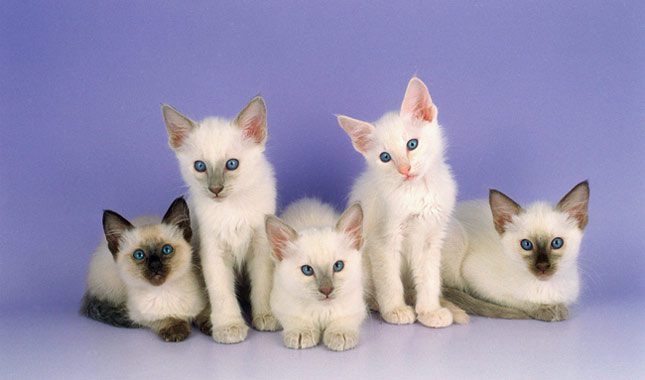

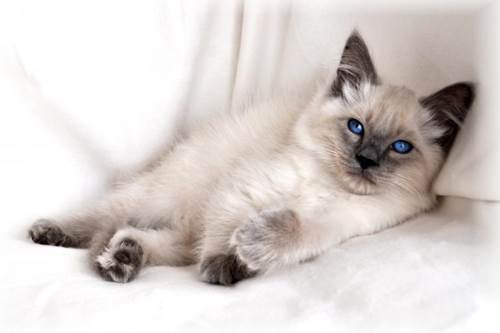

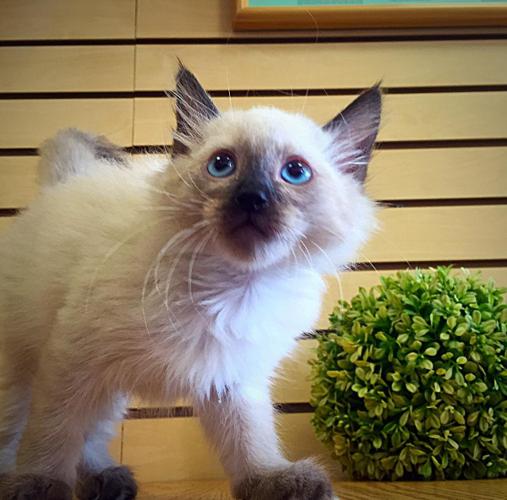

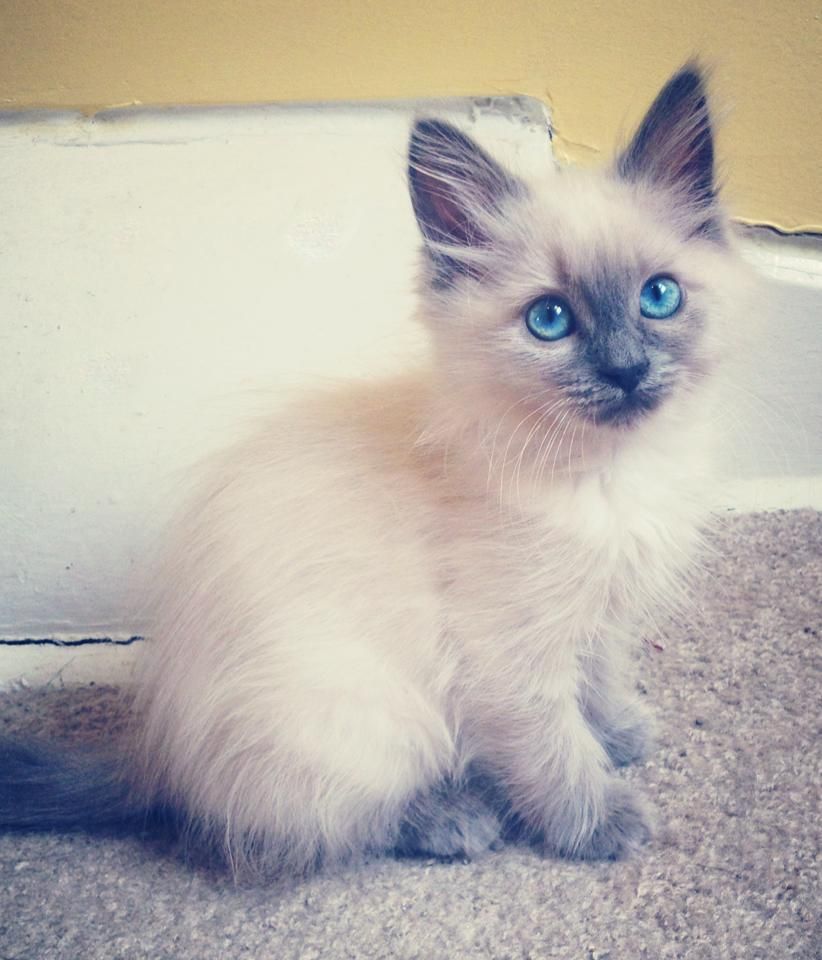

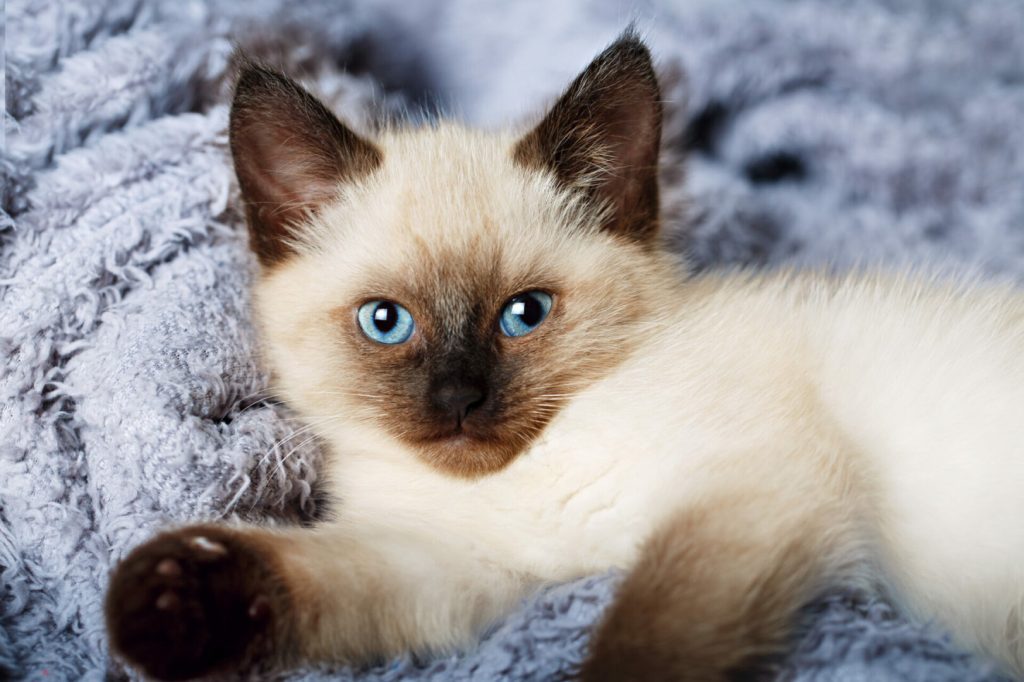

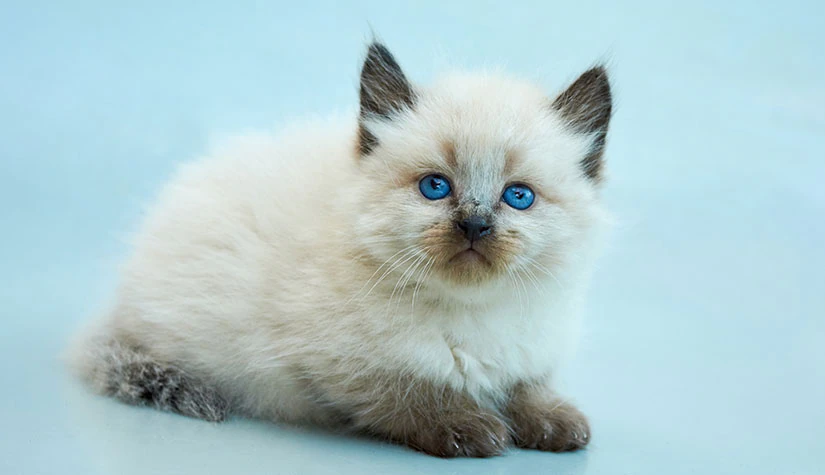

- Before you go to visit a breeder, find out if his cattery is registered with TICA or CFA – this will give a certain guarantee of the quality of the litter.
- Carefully inspect the kitten for undercoat. If there is one, this is a significant defect that will not allow him to participate in exhibitions.
- Ask the seller to show the entire litter to interact with the kittens. See how the Balinese react to a stranger, whether they are willing to make contact or try to hide.
- Do not contact a breeder who is trying to sell kittens under 2.5 months old. This suggests that the seller is not interested in the further fate of the offspring and saves on mandatory veterinary procedures (vaccinations, deworming).
- Specify how many times a year the Balinese cat gives birth, from which you plan to take a kitten. According to the requirements of European clubs, in two years a cat should bring offspring no more than three times.
- Be serious about the pedigree of babies. In Russia, the number of purebred Balinese is small, and mating with foreign producers is very expensive, which encourages unscrupulous breeders to resort to inbreeding (closely related crossing) more often than necessary.
Balinese cat price
The search for a Balinese nursery will take some time – in Russia, only a few specialists are engaged in breeding the breed. Occasionally, ads for the sale of kittens slip through the pages of social networks, but often they are given not by professional breeders, but by amateurs. Prices for the offspring of Balinese cats are usually above average and start from 800 – 900$.





